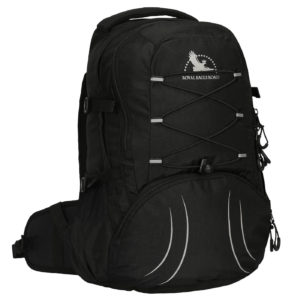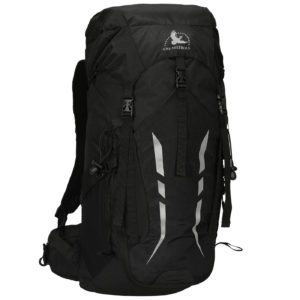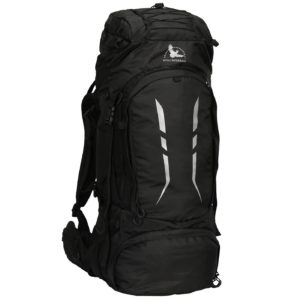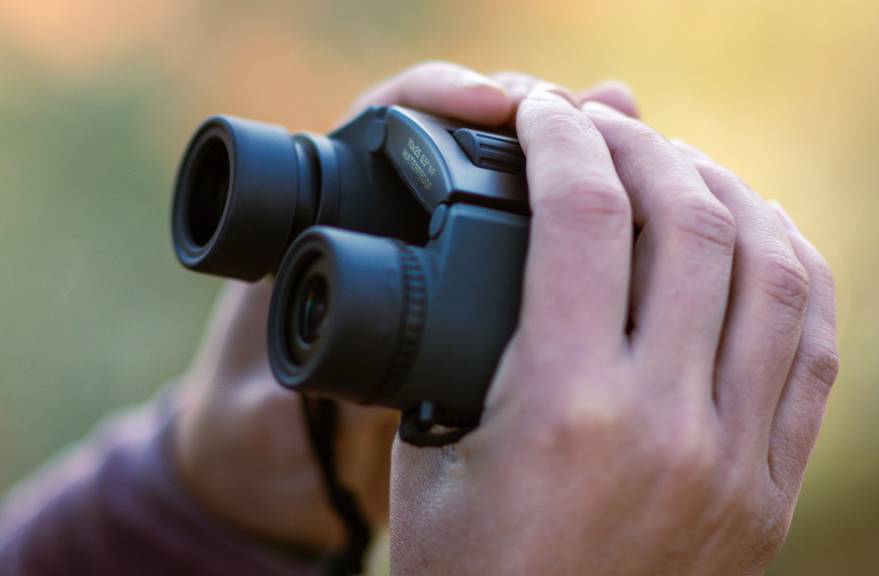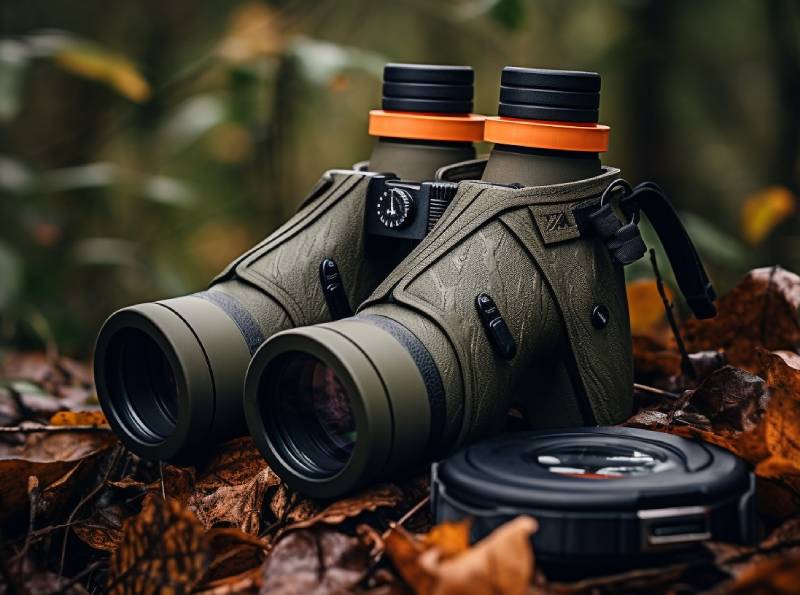 Reading time: 18 minutes
Reading time: 18 minutesChoosing a suitable model and learning how to pack a backpack are key aspects to consider before any trip, hike or excursion.
In this guide you will learn:
- The difference between hiking backpack and traditional backpack
- How to choose the volume of the backpack
- How to pack a backpack in the right way
- Hikers tips
- Why you should test the backpack before the trip or the excursion
Hiking backpack vs traditional backpack
The hiking backpack, unlike the traditional backpack, can adapt perfectly to the physical shape of the hiker. The shoulder straps, the straps, the hip belt, as well as the backrest in the larger models, allow you a correct weight distribution on shoulders and backbone.
The comfort of the backpack is fundamental because everything you need to carry for travel and/or excursion is stored inside. Hiking backpacks can have some features that perfectly suitbackpacking trips. In addition to being more comfortable than traditional models, they are more versatile and useful for various occasions.
After closely observing all the parts that compose a backpack and the features to consider, it’s time to pack the backpack.
How to choose the volume of the backpack
In the guide “How to choose a backpack” we showed the difference of backpacks based on volume.
Carrying a backpack on your shoulders need to be pleasant as well as safe. An uneven weight distribution could lead you to lose stability and cause back pain.
Equipment and lightweight clothing can help you to save precious space and weight. Preparing a list to better organize what to bring and how to distribute the weight inside could be very useful.
The volume of the backpack is measured in liters and there is no universal classification to decide which backpack is the most suitable. Everything depends on different factors:
- Habits: There are some people who travel minimalist and some who prefer not to give up anything. The choice of what to bring depends a lot on personal habits.
- Season or geographical location: Traveling or hiking in winter requires a backpack suitable for containing more bulky clothing compared to summer. Same consideration if you are planning to move to different geographical locations such as cold countries, mountains, or tropical areas and seaside. The destination influences the volume of the backpack.
- Traveling solo or with a group: When traveling solo, you need to bring all the equipment as you cannot share it with anyone. For this reason, it is necessary to evaluate the kind of backpack to carry and its features.
- Duration: A several nights stay obviously requires a larger backpack than a daily excursion. A general guide could be: up to 30 liters for daily excursions, up to 50 liters for short overnight stays (for example one night), from 50 liters up for long hiking or intercontinental trips.
How to pack a backpack
Packing a backpack for the first time could seem complicated, in reality, it is simpler than you might think.
An even load and a correct straps adjustment keep the backpack close to your back and at the same time transfer the weight to your hips. Take the time to distribute the load evenly at both sides as to access easily everything you need while on the move. This will grant your excursion pleasant and less tiring.
Before packing your backpack, make a list of things you need to carry and sort them according to the weight: heavy, medium and light items. It will be easier to distribute weight optimally.
The basic rule is: placing light items at the bottom, compact and heaviest items close to your back, at the height of the shoulder blades, medium weight bulkier items in the remaining areas.
To understand how to distribute the weight inside and optimize the available space, you will find useful to divide the backpack into three zones:
- Bottom zone
- Core zone
- Top zone
The order is fundamental so we will examine how to pack a backpack starting from the bottom up.
Bottom zone
The lower area of the backpack forms a support base for all the rest of the content as well as absorbing shocks on the back and cushioning the weight. In this bottom zone, you can store lightweight and bulky items such as sleeping bag, shoes, spare clothing and everything that you don’t need frequently.
In most backpacks, this area can be obtained through an internal extendable divider, as in the case of our Himalaya 65-liter backpack. It is accessible directly from the outside without extracting everything from above.
Internal extendable divider. Himalaya 65 liter backpack
Core zone
The central area of the backpack is the part located close to the backbone. Because of its proximity to the center of gravity (near the navel), you need to store here the heaviest items. For example, in the case of long hikes, this core zone is suitable for cooking kits, camping stoves and food supplies.
The closer to the shoulders these heavy items are, the greater the stability of the backpack.
Most hiking backpacks are equipped with an internal pocket for the hydration system, as you can find in all our models. If heavier items are too far from the backbone and therefore from the center of gravity, the backpack will tend to push back and the shoulder straps will increase the tension on the shoulders.
Top zone
The upper area of the backpack is dedicated to handy equipment and lightweight clothing such as a waterproof jacket or sweatshirt. Being an easily accessible area, you can put here all the frequently used items.
Accessory pockets
The backpack pockets have different sizes and positions. The side pockets can hold water, umbrella, snacks, sunscreen or anything else that can be pulled out even when moving. The hip belt pockets are also practical and used for snacks, cameras, GPS or compass. The lid pockets can be external (and therefore accessible from the outside) or internal (with greater protection as they can only be reached from inside the backpack). They can contain documents, money, geographic maps, first aid kits, flashlights and more.
Featured backpack Himalaya 65 liter
Gear loops
Laces, loops and external hooks allow you to fix the equipment outside the backpack if there is no space inside or simply for ease of use. For example, tent poles, trekking poles, climbing ropes are fixed outside. Remember to hang on the external hooks the least amount of equipment to prevent getting entangled along the path. You can carry the camping mattress under the lid.
Carefully preparing your backpack helps you remember where your items are located every time you need them. During the excursion, you can change the order of the content according to the actual needs. Optimize the available space evenly and use soft clothing to fill empty spaces or wrap equipment less stable.
Hikers tips
- Before an excursion or a trip, take some time to consider how to pack the backpack and organize the content according to weight and usefulness. Proper organization and straps adjustment can enhance the quality of excursion and physical well-being.
- Considering that the center of gravity of our body is at the level of the navel, remember to keep the load close to your back to walk stably. A hip belt is needed also for this.
- Balancing the weight of the backpack is fundamental. If it is not completely full, you can use the compression straps to compact the pack.
- Use the straps to adapt the backpack to your body and carry it comfortably. There is no model that perfectly fits everyone. It is necessary to adjust the straps according to your body shape and the need.
- Place the heaviest items down and use the hip belt to transfer the weight to the hips and avoid back pain.
- When packing the backpack, it is important to consider frequently used items. They need to be easily accessible, without taking out everything from the backpack to pick them up. On the contrary, all the items you use less can be placed in the bottom.
- You can use packing cubes or waterproof bags to keep the contents tidy inside the backpack. By sorting the content within, you will find easily what you are looking for. You can also consider waterproof backpacks (or dry bags) where you can store damp clothes to isolate them from the rest of the contents.
- The backpack cover is lightweight, practical and essential in case of rain or snow. During excursions, you can use it to cover the backpack so that the hooks, straps and pockets do not get caught in the branches. Our Santiago 45 liter and Himalaya 65 liter backpacks include a rain cover in the bottom pocket.
- If heavier objects are placed in the core zone of the backpack, the weight will tend downwards and not outwards. On the contrary,if positioned too lower, the shoulders will support the heaviest weight. Or if you put it too higher, our body will tend to lose balance.
- On easier terrain (for example excursions on flat paths or urban walking), you can place the heaviest items upwards, close to the shoulders. In this way the backpack will adhere to your backbone keeping it straight. On harder terrain (uphill or on mountain paths), you can place the heaviest items closer to the center of gravity so as to counterbalance the body bent forward and maintain greater balance.
Check the backpack before the excursion
Once you have packed the backpack and evenly distributed the weight inside, make sure it is comfortable to carry. The side compression straps allow you to compact the load and keep everything in place. They are essential if the backpack is not completely full. If the load is too heavy and hinders movement, leave out something.
If the backpack is not balanced or the equipment inside moves from one side to the other, distribute the weight evenly on both sides. Make sure to place the heaviest objects in the central area, close to your backbone.
Pay attention when lifting the backpack to avoid muscle aches and damage the shoulder straps. Bend the knees and stand up with the legs instead of arching the back. Always lift the backpack from both shoulder straps.
Now that you know all the parts of a backpack, you can easily choose the model that suits your needs and adjust the shoulder straps according to your body shape.
In this post you have learned how to pack a backpack correctly and distribute evenly the weight inside. Take a look at our Brigante 28 liter, Santiago 45 liter and Himalaya 65 liter backpacks, they are suitable for hiking, trekking and travel. We ship in Europe.
Royal Eagle Road
Unconventional Exploring

